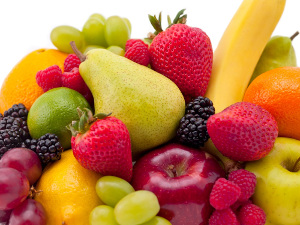U.S. schools build bonds with local farmers
The United States government will supply more than 3,200 schools nationwide with local agricultural products in an intiative to get students eating fresher, healthier food year-round. 
The United States Department of Agriculture (USDA) Farm to Schools grant provides US$4.5 million worth of funding across 37 states and the District of Columbia, reaching around 1.75 million students.
Click here for a hands-on gallery of how the initiative works, courtesy of Colorado Farm to School.
Agriculture Deputy Secretary Kathleen Merrigan described the grant as a way to connect school cafeterias with local producers.
"When schools buy food from nearby producers, their purchasing power helps create local jobs and economic benefits, particularly in rural agricultural communities," Merrigan said in a media release.
"Evidence also suggests that when kids understand more about where food comes from and how it is produced, they are more likely to make healthy eating choices."
The 68 different projects administered through the grant range from job creation efforts that hire new farm to school coordinators, to hands-on learning activities, such as field trips to farms and creation of school gardens.
About half of the students served live in rural areas, including the approximately 20,000 students in Greeley-Evans School District 6, located in one of Colorado's main agricultural centers.
Theresa Myers, the district's director of communications, explained that the USDA grant allows the county to support local producers and expand on-going healthy food initiatives.
"The $83,000 grant that we got from the USDA is specifically for what we are calling a food hub program. We are going to use that funding to purchase equipment and more produce from our local growers in season and then we are going to minimally process that food, which means mostly freezing," Myers said.
As a relatively large district, Greeley-Evans schools give the area an extra advantage by serving as a provider for smaller, surrounding districts.
"Some of the produce we’re able to buy through our farm-to-table program, we will then process and sell to smaller school districts in our area too. So they’ll be able to use fresh produce and they won’t have to buy it in small quantities, which is more expensive for them. They’ll be able to buy it at the same rate we’re getting it then," Myers said.
Myers added that the USDA grant will help the school district build on its own farm-to-school program that has already been running for four years.
"85% of our food now is made from scratch, and fresh fruits and vegetables are an essential part of that. We’re just trying to keep our kids healthy and using local produce is a great way to do that," Myers said.
The national Farm to School program is part of the USDA's Know Your Farmer, Know Your Food initiative, launched in 2009 to coordinate work with local and regional food systems and create new opportunities for farmers, ranchers, consumers and rural communities.















































